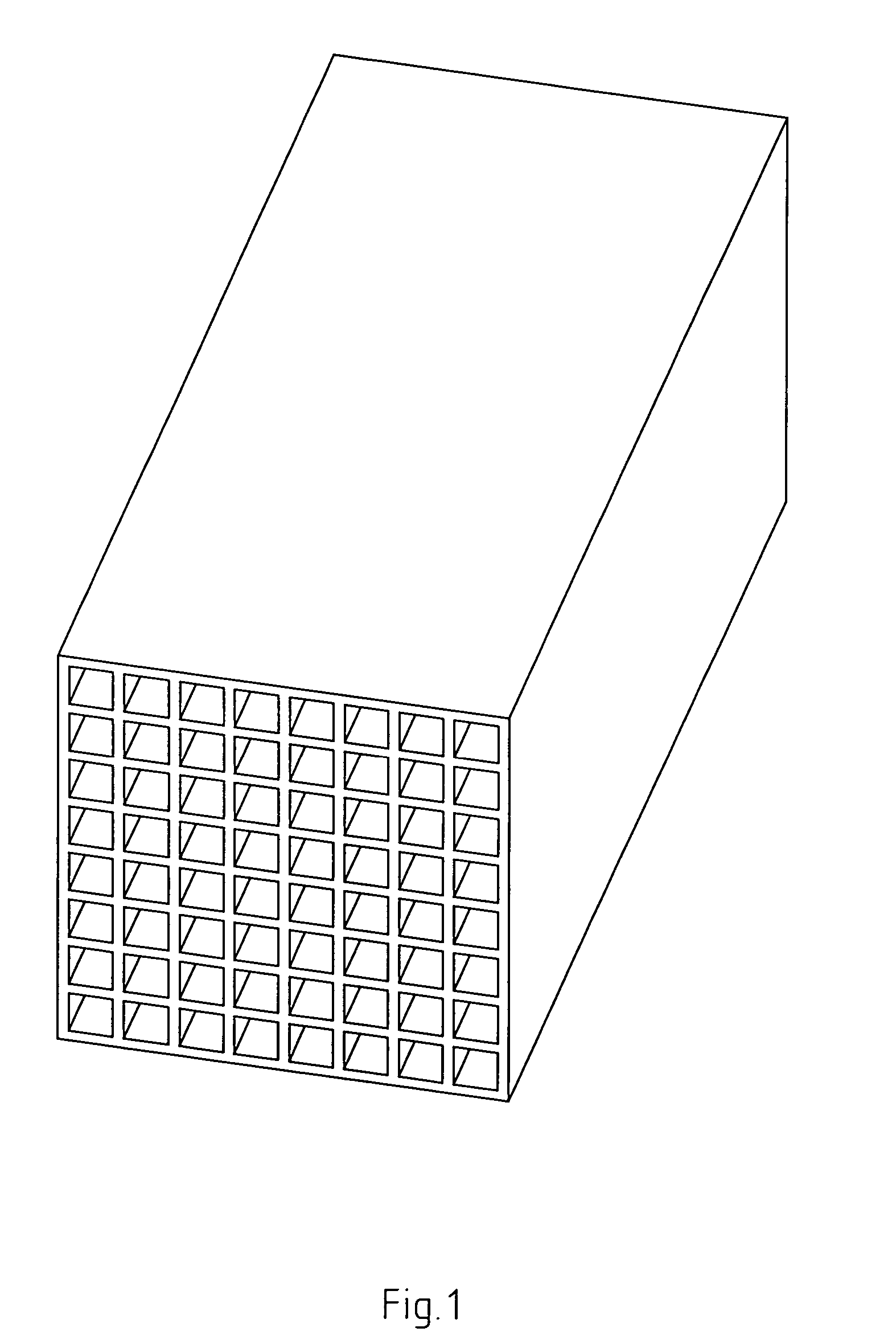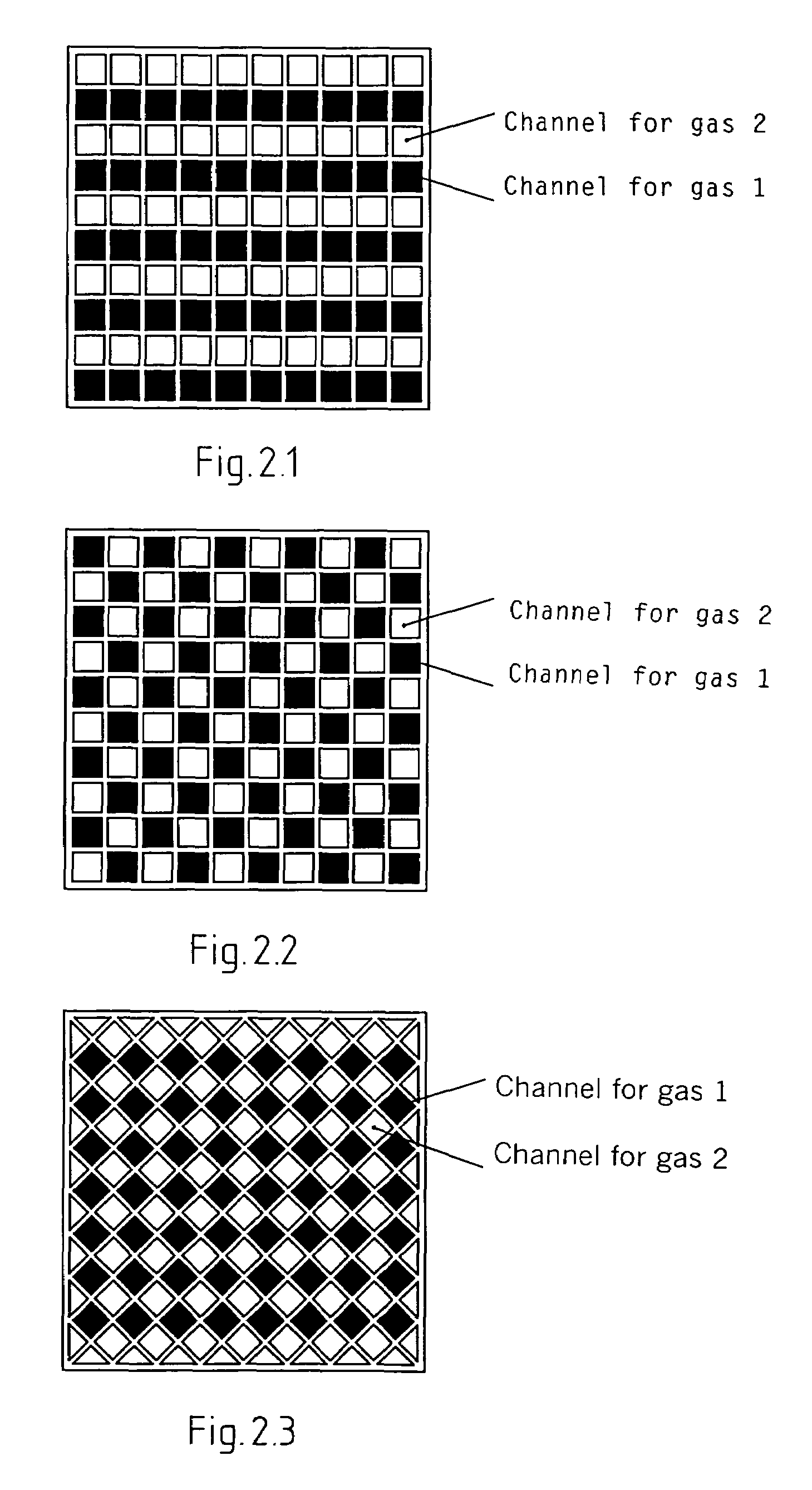Method and equipment for feeding two gases into and out of a multi-channel monolithic structure
- Summary
- Abstract
- Description
- Claims
- Application Information
AI Technical Summary
Benefits of technology
Problems solved by technology
Method used
Image
Examples
example 1
[0099]Table 1 shows two alternatives that are calculated to show the effect of radiation when a wall internally between two colder gas channels is radiated by a hotter wall. T3 and T4 indicate the mean gas temperature for cold gas and hot gas respectively.
[0100]
TABLE 1Numerical values used to calculate the effect of radiation from a hot wallto a wall between two gas channels with colder gas.HotHot gasColdColdHot gasCold gasAlt.gas inoutgas ingas outmean (T4)mean (T3)1(° C.)1 2561 0501 0191 2211 1531 1201(° K.)1 4261 3932(° C.)1 093 505 4531 000 799 7272(° K.)1 0721 000
[0101]A wall temperature T1 is assumed midway between the hot and cold gas temperatures, and the following is produced:
[0102]
Alt 1Alt 2T1 (° K.)1 4101 036(Temperature of wall between hot and cold gas)T2 (° K.)1 3931 000(Temperature of cold gas)λ = 0.1 W / mK(Thermal capacity of gas)b = 2.0 mm(Distance between walls)εo = 5.67 10−8 W / m2K(Stefan Bolzmann's constant)εr = 0.9(Emissivity of walls)P1 = λ / b * 3.75 * (T1 − T3) = ...
PUM
 Login to View More
Login to View More Abstract
Description
Claims
Application Information
 Login to View More
Login to View More - R&D
- Intellectual Property
- Life Sciences
- Materials
- Tech Scout
- Unparalleled Data Quality
- Higher Quality Content
- 60% Fewer Hallucinations
Browse by: Latest US Patents, China's latest patents, Technical Efficacy Thesaurus, Application Domain, Technology Topic, Popular Technical Reports.
© 2025 PatSnap. All rights reserved.Legal|Privacy policy|Modern Slavery Act Transparency Statement|Sitemap|About US| Contact US: help@patsnap.com



